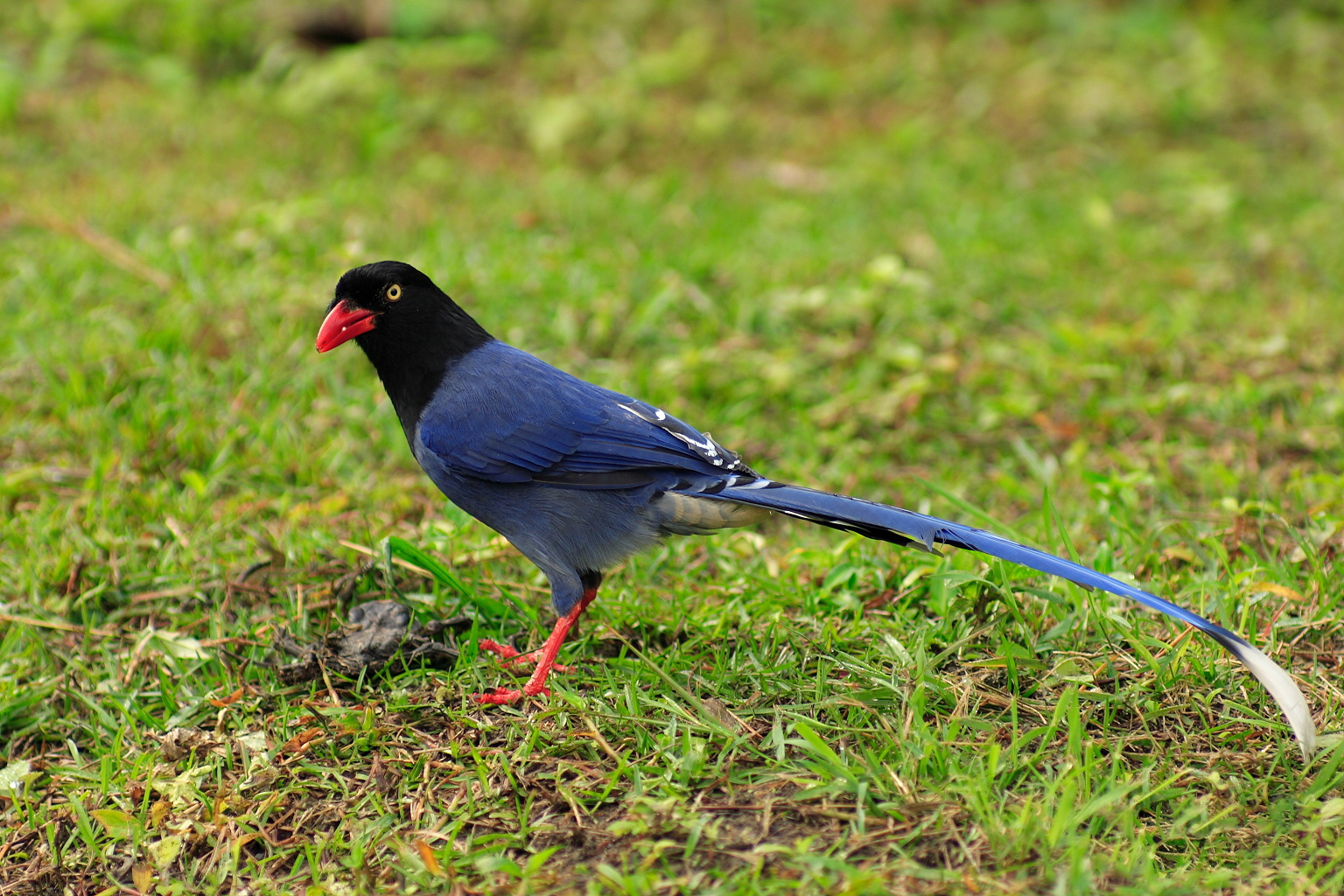|
Macaca Cyclopis
The Formosan rock macaque (''Macaca cyclopis''), also known as the Formosan rock monkey or Taiwanese macaque, is a macaque endemic to the island of Taiwan, which has also been introduced to Japan. Besides humans, Formosan rock macaques are the only native primates living in Taiwan. The species was first described by Robert Swinhoe in 1862. Physical characteristics Rock macaques measure 50–60 cm and weigh 5–12 kg, generally females are smaller. Their tails are moderately long and measure 26–45 cm. The Formosan rock macaque is brown or gray in color. Like all other macaques, it has specialized pouch-like cheeks, allowing it to temporarily hoard its food. The gathered morsels are eaten sometime later, in safe surroundings. Life and behavior Among the 22 species of the genus '' Macaca'' that are found in southern and eastern Asia as well as northwestern Africa, the Formosan macaque is the only species endemic to the island of Taiwan. Formosan rock macaques ... [...More Info...] [...Related Items...] OR: [Wikipedia] [Google] [Baidu] |
Robert Swinhoe
Robert Swinhoe FRS (1 September 1836 – 28 October 1877) was an English diplomat and naturalist who worked as a Consul in Formosa. He catalogued many Southeast Asian birds, and several, such as Swinhoe's pheasant, are named after him. Biography Swinhoe was born in Calcutta where his father, who came from a Northumberland family, was a lawyer. There is no clear record of the date of his arrival in England, but it is known he attended the University of London, and in 1854 joined the China consular corps. He was stationed to the remote port of Amoy, some 300 miles to the northeast of Hong Kong, in 1855. While at this port he not only mastered the Chinese language (both official Mandarin and the local Amoy dialect), but also initiated a detailed and authoritative understanding of the ornithology of eastern China. In March, 1856, Swinhoe made an "adventurous" visit to the camphor districts of northwestern Formosa on board a lorcha, a hybrid vessel utilizing a European hull an ... [...More Info...] [...Related Items...] OR: [Wikipedia] [Google] [Baidu] |
Forage
Forage is a plant material (mainly plant leaves and stems) eaten by grazing livestock. Historically, the term ''forage'' has meant only plants eaten by the animals directly as pasture, crop residue, or immature cereal crops, but it is also used more loosely to include similar plants cut for fodder and carried to the animals, especially as hay or silage. While the term ''forage'' has a broad definition, the term ''forage crop'' is used to define crops, annual or biennial, which are grown to be utilized by grazing or harvesting as a whole crop. Common forages Grasses Grass forages include: *'' Agrostis'' spp. – bentgrasses **''Agrostis capillaris'' – common bentgrass **''Agrostis stolonifera'' – creeping bentgrass *''Andropogon hallii'' – sand bluestem *''Arrhenatherum elatius'' – false oat-grass *'' Bothriochloa bladhii'' – Australian bluestem *''Bothriochloa pertusa'' – hurricane grass *''Brachiaria decumbens'' – Surinam grass *''Brachiaria humidicola'' – ... [...More Info...] [...Related Items...] OR: [Wikipedia] [Google] [Baidu] |
Mammals Of Japan
Mammals () are a group of vertebrate animals constituting the class Mammalia (), characterized by the presence of mammary glands which in females produce milk for feeding (nursing) their young, a neocortex (a region of the brain), fur or hair, and three middle ear bones. These characteristics distinguish them from reptiles (including birds) from which they diverged in the Carboniferous, over 300 million years ago. Around 6,400 extant species of mammals have been described divided into 29 orders. The largest orders, in terms of number of species, are the rodents, bats, and Eulipotyphla (hedgehogs, moles, shrews, and others). The next three are the Primates (including humans, apes, monkeys, and others), the Artiodactyla (cetaceans and even-toed ungulates), and the Carnivora (cats, dogs, pinniped, seals, and others). In terms of cladistics, which reflects evolutionary history, mammals are the only living members of the Synapsida (synapsids); this clade, together with ... [...More Info...] [...Related Items...] OR: [Wikipedia] [Google] [Baidu] |
Mammals Of Taiwan
Mammals () are a group of vertebrate animals constituting the class Mammalia (), characterized by the presence of mammary glands which in females produce milk for feeding (nursing) their young, a neocortex (a region of the brain), fur or hair, and three middle ear bones. These characteristics distinguish them from reptiles (including birds) from which they diverged in the Carboniferous, over 300 million years ago. Around 6,400 extant species of mammals have been described divided into 29 orders. The largest orders, in terms of number of species, are the rodents, bats, and Eulipotyphla (hedgehogs, moles, shrews, and others). The next three are the Primates (including humans, apes, monkeys, and others), the Artiodactyla (cetaceans and even-toed ungulates), and the Carnivora (cats, dogs, seals, and others). In terms of cladistics, which reflects evolutionary history, mammals are the only living members of the Synapsida (synapsids); this clade, together with Sauropsida ... [...More Info...] [...Related Items...] OR: [Wikipedia] [Google] [Baidu] |
Endemic Fauna Of Taiwan
Endemism is the state of a species being found in a single defined geographic location, such as an island, state, nation, country or other defined zone; organisms that are indigenous to a place are not endemic to it if they are also found elsewhere. For example, the Cape sugarbird is found exclusively in southwestern South Africa and is therefore said to be ''endemic'' to that particular part of the world. An endemic species can be also be referred to as an ''endemism'' or in scientific literature as an ''endemite''. For example '' Cytisus aeolicus'' is an endemite of the Italian flora. '' Adzharia renschi'' was once believed to be an endemite of the Caucasus, but it was later discovered to be a non-indigenous species from South America belonging to a different genus. The extreme opposite of an endemic species is one with a cosmopolitan distribution, having a global or widespread range. A rare alternative term for a species that is endemic is "precinctive", which applies to s ... [...More Info...] [...Related Items...] OR: [Wikipedia] [Google] [Baidu] |
Primates Of East Asia
Primates are a diverse order of mammals. They are divided into the strepsirrhines, which include the lemurs, galagos, and lorisids, and the haplorhines, which include the tarsiers and the simians (monkeys and apes, the latter including humans). Primates arose 85–55 million years ago first from small terrestrial mammals, which adapted to living in the trees of tropical forests: many primate characteristics represent adaptations to life in this challenging environment, including large brains, visual acuity, color vision, a shoulder girdle allowing a large degree of movement in the shoulder joint, and dextrous hands. Primates range in size from Madame Berthe's mouse lemur, which weighs , to the eastern gorilla, weighing over . There are 376–524 species of living primates, depending on which classification is used. New primate species continue to be discovered: over 25 species were described in the 2000s, 36 in the 2010s, and three in the 2020s. Primates have large brai ... [...More Info...] [...Related Items...] OR: [Wikipedia] [Google] [Baidu] |
List Of Endemic Species Of Taiwan
The endemic species of Taiwan are organisms that are endemic to the island of Taiwan— that is, they occur nowhere else on Earth. Percentages of endemic animals of all living species in Taiwan. ---- Percentages of endemic plants of all living species in Taiwan.Hsieh, C. F. (2002) Composition, endemism and phytogeographical affinities of the Taiwan Flora. Taiwania 47(4): 298-310. Endemic fauna Endemic mammals *Order: Carnivora (carnivorans) **Formosan black bear – ''Ursus thibetanus formosanus'' **Formosan ferret-badger – '' Melogale subaurantiaca'' (Swinhoe) *Order Artiodactyla (even-toed ungulates) ** Formosan boar – '' Sus sus taivanus'' **Formosan sika deer – ''Cervus nippon taiouanus'' ** Taiwan serow – '' Naemorhedus swinhoei'' (Gray) *Order Eulipotyphla (shrews and kin) **Taiwanese mole shrew – '' Anourosorex yamashinai'' Kuroda ** Tada's shrew – ''Crocidura tadae'' Tokuda & Kano ** Formosan shrew – ''Episoriculus fumidus'' Thomas ** Koshun shrew � ... [...More Info...] [...Related Items...] OR: [Wikipedia] [Google] [Baidu] |
List Of Protected Species In Taiwan
A ''list'' is any set of items in a row. List or lists may also refer to: People * List (surname) Organizations * List College, an undergraduate division of the Jewish Theological Seminary of America * SC Germania List, German rugby union club Other uses * Angle of list, the leaning to either port or starboard of a ship * List (information), an ordered collection of pieces of information ** List (abstract data type), a method to organize data in computer science * List on Sylt, previously called List, the northernmost village in Germany, on the island of Sylt * ''List'', an alternative term for ''roll'' in flight dynamics * To ''list'' a building, etc., in the UK it means to designate it a listed building that may not be altered without permission * Lists (jousting), the barriers used to designate the tournament area where medieval knights jousted * ''The Book of Lists'', an American series of books with unusual lists See also * The List (other) * Listing (di ... [...More Info...] [...Related Items...] OR: [Wikipedia] [Google] [Baidu] |
Gestation
Gestation is the period of development during the carrying of an embryo, and later fetus, inside viviparous animals (the embryo develops within the parent). It is typical for mammals, but also occurs for some non-mammals. Mammals during pregnancy can have one or more gestations at the same time, for example in a multiple birth. The time interval of a gestation is called the '' gestation period''. In obstetrics, ''gestational age'' refers to the time since the onset of the last menses, which on average is fertilization age plus two weeks. Mammals In mammals, pregnancy begins when a zygote (fertilized ovum) implants in the female's uterus and ends once the fetus leaves the uterus during labor or an abortion (whether induced or spontaneous). Humans In humans, pregnancy can be defined clinically or biochemically. Clinically, pregnancy starts from first day of the mother's last period. Biochemically, pregnancy starts when a woman's human chorionic gonadotropin (hCG) levels ... [...More Info...] [...Related Items...] OR: [Wikipedia] [Google] [Baidu] |
Perineum
The perineum in humans is the space between the anus and scrotum in the male, or between the anus and the vulva in the female. The perineum is the region of the body between the pubic symphysis (pubic arch) and the coccyx (tail bone), including the perineal body and surrounding structures. There is some variability in how the boundaries are defined. The perineal raphe is visible and pronounced to varying degrees. The perineum is an erogenous zone. The word perineum entered English from late Latin via Greek περίναιος ~ περίνεος ''perinaios, perineos'', itself from περίνεος, περίνεοι 'male genitals' and earlier περίς ''perís'' 'penis' through influence from πηρίς ''pērís'' 'scrotum'. The term was originally understood as a purely male body-part with the perineal raphe seen as a continuation of the scrotal septum since masculinization causes the development of a large anogenital distance in men, in comparison to the corresponding lack ... [...More Info...] [...Related Items...] OR: [Wikipedia] [Google] [Baidu] |
Estrus
The estrous cycle (, originally ) is the set of recurring physiological changes that are induced by reproductive hormones in most mammalian therian females. Estrous cycles start after sexual maturity in females and are interrupted by anestrous phases, otherwise known as "rest" phases, or by Pregnancy, pregnancies. Typically, estrous cycles repeat until death. These cycles are widely variable in duration and frequency depending on the species.Bronson, F. H., 1989. Mammalian Reproductive Biology. University of Chicago Press, Chicago, IL, USA. Some animals may display bloody vaginal discharge, often mistaken for menstruation. Many mammals used in commercial agriculture, such as cattle and sheep, may have their estrous cycles artificially controlled with hormonal medications for optimum productivity. The male equivalent, seen primarily in ruminants, is called Rut (mammalian reproduction), rut. Differences from the menstrual cycle Mammals share the same reproductive system, includ ... [...More Info...] [...Related Items...] OR: [Wikipedia] [Google] [Baidu] |


.jpg)
.jpg)


